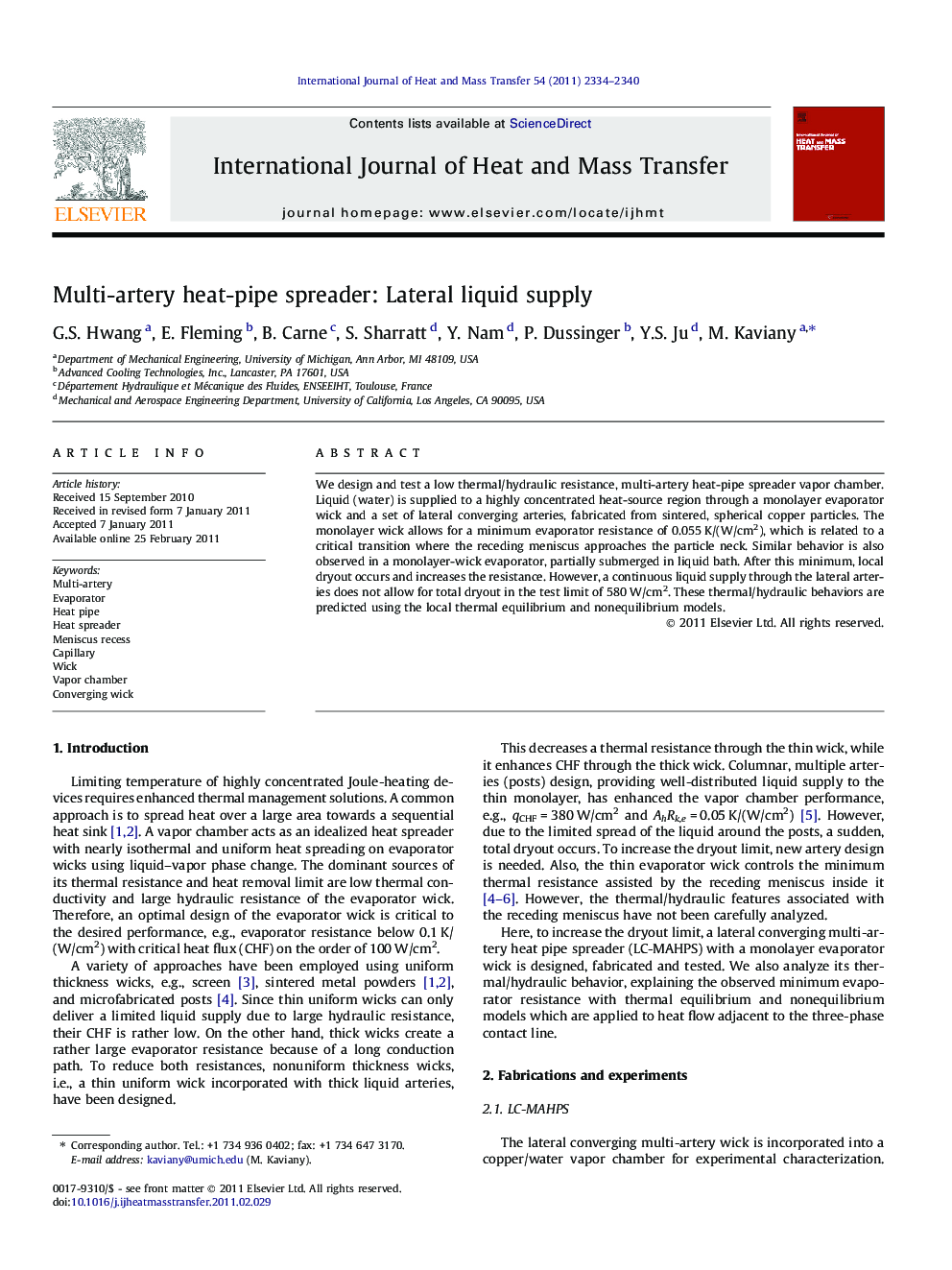| Article ID | Journal | Published Year | Pages | File Type |
|---|---|---|---|---|
| 659523 | International Journal of Heat and Mass Transfer | 2011 | 7 Pages |
We design and test a low thermal/hydraulic resistance, multi-artery heat-pipe spreader vapor chamber. Liquid (water) is supplied to a highly concentrated heat-source region through a monolayer evaporator wick and a set of lateral converging arteries, fabricated from sintered, spherical copper particles. The monolayer wick allows for a minimum evaporator resistance of 0.055 K/(W/cm2), which is related to a critical transition where the receding meniscus approaches the particle neck. Similar behavior is also observed in a monolayer-wick evaporator, partially submerged in liquid bath. After this minimum, local dryout occurs and increases the resistance. However, a continuous liquid supply through the lateral arteries does not allow for total dryout in the test limit of 580 W/cm2. These thermal/hydraulic behaviors are predicted using the local thermal equilibrium and nonequilibrium models.
